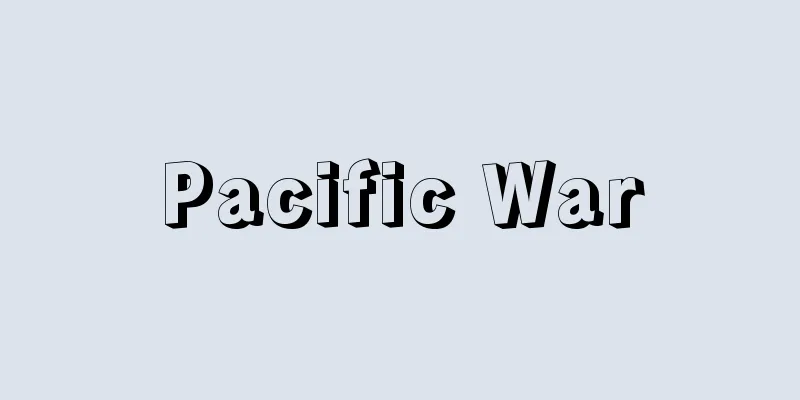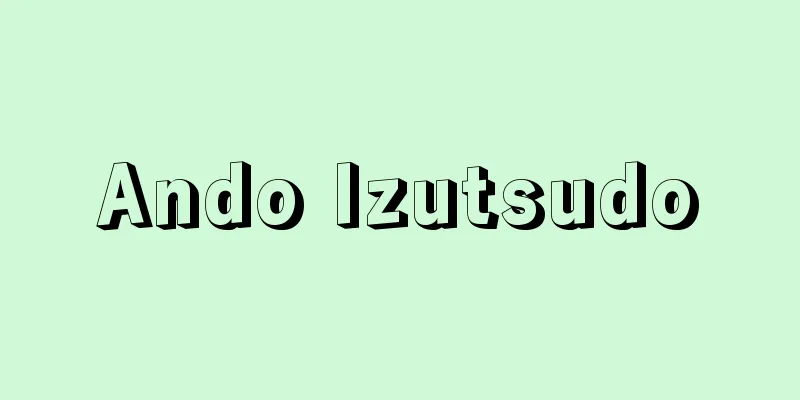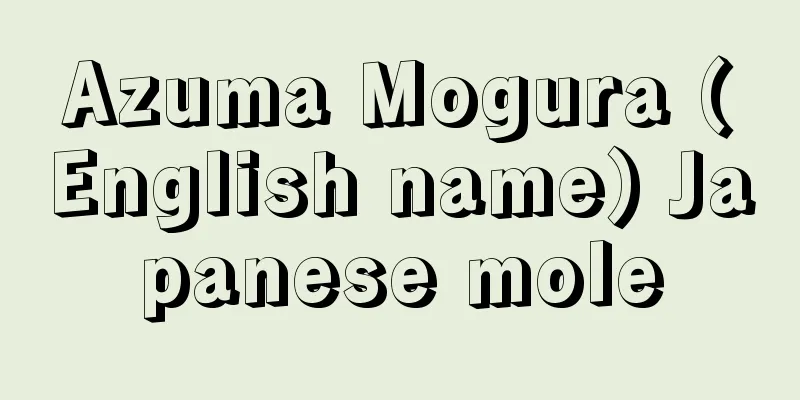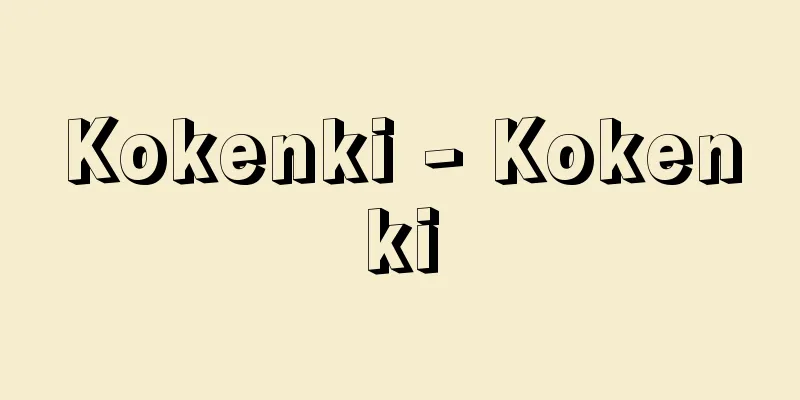Pacific War

|
This refers to the war fought between December 1941 and August 1945 between Japan and the Allied Powers, primarily the United States and the United Kingdom, and is broadly considered part of World War II. The name "Pacific War" was given to the war because it was fought in the Pacific Ocean for the United States, and in Japan during the war it was called the Greater East Asia War. After Japan was defeated and occupied by the Allied Powers, it also came to be called the Pacific War in Japan. It has been argued that the nature of this war had many different aspects, including fascism and anti-fascism, a battle for markets between imperialist countries, and imperialism and anti-imperialistism, but its main character is a fight to protect democracy against fascism. On December 8, 1941, the Japanese Navy launched a surprise attack on the American naval base in Hawaii, which marked the beginning of the Pacific War. Prior to this attack, diplomatic negotiations between Japan and the United States had been ongoing to reconcile the deteriorating relationship, but in response to Japan's invasion of China and the Tripartite Pact with Germany and Italy, the American government continued to demand the withdrawal of troops from China and withdrawal from the Tripartite Pact, and continued to impose a total embargo on oil imports. The Japanese government, which considered the proposal presented by the United States on November 26, 1941 (→Hull Note) to be the final answer, decided to go to war. At the same time as the attack on Pearl Harbor, the Japanese military also launched military operations in Hong Kong, Malaysia, the Philippines, Guam, Wake Island, and other places, causing great damage to the American and British forces, who had not anticipated the outbreak of war. In February 1942, the Japanese occupied Singapore, the largest British base in Asia, and took 138,000 British soldiers prisoner. In March of the same year, the Japanese occupied the Dutch East Indies, and then invaded Burma, bringing Rangoon under Japanese control. By May, they had expanded their control to New Guinea, establishing a vast sphere of influence in Southeast Asia. In response, the United States changed its domestic peace regime to a war regime, and worked hard to build up its military. At the same time, the fighting spirit of the people, angry at the Japanese military's surprise attack, was embodied in the slogan "Remember Pearl Harbor," and the nation's power was concentrated in the war against Japan. In the Battle of Midway in June 1942, the US Navy's Pacific Fleet attacked the Combined Fleet from the air and sea after discovering the plan of the Japanese Navy's Combined Fleet Commander-in-Chief Yamamoto Isoroku. As a result, the Japanese Navy's Combined Fleet, including its three aircraft carriers, collapsed. The American counterattack had already begun six months after the attack on Pearl Harbor. The attack on Guadalcanal, which began in August 1942, was a memorable battle of the American military's total counterattack (see Battle of Guadalcanal), but Japan made the mistake of not seeing through it and sending in its forces one by one, which resulted in enormous losses. In April 1943, Yamamoto Isoroku was killed in an ambush by American forces while aboard a plane. Since Yamamoto was considered a "hero who saved the nation" in Japan, his death was kept secret for some time to soften the shock to the Japanese people. By 1943, the Japanese military had suffered because they had expanded their sphere of influence so much. By the end of 1943, the United States had seen through Japan's national power and was drawing Japan into a war of attrition, while at the same time planning Douglas MacArthur's strategy of "Leapfrogging." They selected key routes from among the islands in South Asia occupied by the Japanese military to approach the Japanese mainland and launched concentrated attacks. On the other hand, they cut off supply routes to the islands that they were not attacking, which caused Japanese troops to starve to death everywhere. By the end of 1943, control of the sea had fallen into the hands of the Americans, the Japanese military's sphere of influence had shrunk, and many Japanese soldiers were abandoned. In November 1943, Japan held the Greater East Asia Conference in Tokyo, bringing together representatives from Burma, the Philippines and other countries under Japanese military rule, and confirmed the Japan-led Greater East Asia concept. However, since some groups in each country knew that the war situation was worsening for the Japanese military and had communication routes with the Allies, the Greater East Asia Co-Prosperity Sphere concept was not realistic. In June 1944, the Japanese Navy launched Operation A under the pretext of "Defend Saipan to the death," but its task force and attack aircraft suffered a fatal blow in the Battle of the Mariana Islands. In addition, the American forces landed on Saipan (→Battle of Saipan), resulting in the deaths of the garrison and civilians. After that, the deaths of the Japanese military were repeated all over the battlefield. In the Battle of Leyte Gulf that began in October, the Japanese military lost four aircraft carriers, battleships, cruisers, and other ships, as well as all of their seaworthy battleships and air power. As a result, kamikaze operations (→ kamikaze units) were forced through, and the Battle of Iwo Jima in February 1945 and the Battle of Okinawa in April of the same year became battles of honorable death and kamikaze attacks. The Imperial General Headquarters called for a decisive battle on the mainland and drew up a strategy of mobilizing the entire army for kamikaze attacks. At the Potsdam Conference in July 1945, Harry S. Truman, Winston Leonard Spencer Churchill, and Chiang Kai-shek jointly issued the Potsdam Declaration, which called for Japan's unconditional surrender, but Japan ignored it. In August, the atomic bombings of Hiroshima and Nagasaki followed by the Soviet Union's entry into the war against Japan led the Japanese government to accept the Potsdam Declaration on the condition that the national polity be maintained. On September 2, the surrender document was signed aboard the battleship Missouri, anchored in Tokyo Bay, bringing to an end the three-year, nine-month Pacific War. Source: Encyclopaedia Britannica Concise Encyclopedia About Encyclopaedia Britannica Concise Encyclopedia Information |
|
1941年12月から 1945年8月までの間,アメリカ合衆国,イギリスを中心とする連合国と日本との間で戦われた戦争をさし,広義には第2次世界大戦に含まれる。太平洋戦争という呼称はアメリカにとって太平洋での戦いであったために名づけられたもので,戦時中の日本では大東亜戦争と呼ばれていた。日本の敗戦後,連合国の占領を受けてからは日本でも太平洋戦争と呼ばれるようになった。この戦争の性格にはファシズムと反ファシズム,帝国主義国間の市場争奪戦,帝国主義と反帝国主義など多様な側面があると論じられているが,主たる性格はファシズムに対するデモクラシー(民主主義)を守る戦いという意味が強い。 1941年12月8日,日本海軍はハワイのアメリカ海軍基地に奇襲攻撃をかけ,それを機に太平洋戦争は始まった。この攻撃にいたるまでに日本とアメリカの間では,関係悪化を調整するための外交交渉が続いていたが,日本の中国侵略,ドイツ,イタリアとの日独伊三国同盟に対してアメリカ政府は中国からの撤兵,三国同盟の離脱を要求して譲らず,石油の全面禁輸を続けていた。1941年11月26日にアメリカが示した案(→ハル・ノート)を最終回答と判断した日本政府は開戦に踏み切った。日本軍は真珠湾攻撃と同時にホンコン,マレーシア,フィリピン,グアム島,ウェーク島などでも軍事行動を開始し,開戦を予期していなかったアメリカ軍やイギリス軍に多大な損害を与えた。1942年2月にはイギリスのアジア最大の基地シンガポールを占領し,イギリス軍の 13万8000人の将兵を捕虜にした。同年3月にはオランダ領東インド諸島を制圧し,さらにビルマに侵攻してラングーンも日本軍の支配するところとなった。5月までにニューギニアまで制圧地域とし,東南アジアに広大な勢力圏を築き上げることになった。 これに対しアメリカは国内の平和体制を戦時体制に切り替えて,軍備増強に励み,あわせて日本軍の奇襲攻撃に怒る国民の戦意が「リメンバー・パールハーバー」という標語に収斂(しゅうれん)されて国力が対日戦争へと傾注されることになった。1942年6月のミッドウェー海戦では日本海軍の連合艦隊司令長官山本五十六の作戦を見破り,アメリカ海軍の太平洋艦隊が空と海から連合艦隊を攻撃した。そのため日本海軍は航空母艦(空母)3隻を含め連合艦隊の編制が崩れてしまった。アメリカ軍の反攻はすでに真珠湾攻撃から 6ヵ月後には始まっていた。1942年8月からのガダルカナル攻撃は,アメリカ軍の総反攻の記念すべき戦闘となったが(→ガダルカナルの戦い),日本はそれを見抜けず兵力を順次投入するという過ちを犯し,莫大な損害を被った。1943年4月,山本五十六の乗った飛行機がアメリカ軍の待ち伏せ攻撃にあい,山本は戦死した。日本で山本は「救国の英雄」とされていたために,その戦死は国民の衝撃をやわらげるためにしばらくは伏せられていた。 日本軍は 1943年にはあまりにもその勢力範囲を広げていたがゆえの苦悩を味わうことになった。アメリカは 1943年末までに日本の国力を見抜いて消耗戦に引き込む一方で,ダグラス・マッカーサーの戦略による「蛙跳び作戦」を計画。日本軍が占領する南アジアの島々のなかから日本本土に近づくための要衝ルートを選び出し,集中的に攻撃を浴びせた。一方,攻撃を仕掛けない島々へは補給ルートを断ち,このため日本軍はいたるところで餓死者を出した。1943年末までに制海権はアメリカ軍の手に落ち,日本軍はその勢力範囲を縮め,見捨てられる日本兵が相次いだ。 1943年11月,日本は東京にビルマ,フィリピンなど日本軍の軍政下にある国々の代表を集めて大東亜会議を開催,日本主導の大東亜構想を確認した。しかし日本軍の戦況悪化を知っている各国国内では連合国との連絡ルートをもつグループもいたため,大東亜共栄圏構想は現実味をもたなかった。1944年6月,日本海軍は「サイパン死守」を掲げて「あ号作戦」を開始したが,マリアナ沖海戦で機動部隊や攻撃機が致命的な打撃を受けた。またアメリカ軍のサイパン上陸作戦(→サイパン島の戦い)によって,守備隊,民間人が玉砕した。以後,日本軍の玉砕は戦場のいたるところで繰り返された。10月からのレイテ湾海戦で日本軍は空母 4隻をはじめ戦艦,巡洋艦などを失い,航行可能な戦艦と空軍力をすべて失った。そのために特攻作戦(→特攻隊)が強行され,1945年2月の硫黄島の戦い,同年4月の沖縄の戦いは玉砕と特攻の戦いとなった。大本営は本土決戦を呼号し,根こそぎ動員で全軍特攻の戦略を立てた。 1945年7月のポツダム会談で,ハリー・S.トルーマン,ウィンストン・レナード・スペンサー・チャーチル,蒋介石の連名により日本の無条件降伏を促すポツダム宣言が発せられたが,日本はこれを無視。8月に入って広島,長崎への原子爆弾投下,さらにソビエト連邦の対日参戦により日本政府は国体護持を条件にポツダム宣言を受け入れた。9月2日,東京湾に停泊する戦艦『ミズーリ』上で降伏文書への調印が行なわれ,3年9ヵ月に及ぶ太平洋戦争は終結した。 出典 ブリタニカ国際大百科事典 小項目事典ブリタニカ国際大百科事典 小項目事典について 情報 |
<<: Pacific Belt Zone - Pacific Belt Zone
Recommend
land
American graphic designer and art director. Born i...
Chromaticity - Shikido
Chromaticity is a term used to describe the proper...
Itsuko - Itsuko
…As the amount of gas or steam from below increas...
Nikko Incident
A conflict that occurred during the Siberian Expe...
Kado - Kado
The former town area in the center of Mitane Town,...
Akasaka [town] - Akasaka
A former town in Akaiwa County, southeastern Okaya...
Fimbristylis miliacea (English spelling)
…[Tetsuo Koyama]. … *Some of the terminology that...
Cholelithiasis
…Cholelithiasis is classified into gallbladder st...
Long-tailed Tailor-Butterfly - Long-tailed Tailor-Butterfly
…Each clutch contains 3-6 eggs, with the female p...
Museum of Modern Literature
A facility for collecting, preserving, and displa...
Infanticide
…While still a student, he became interested in t...
Sedum pluricaule (English spelling)
… [Hiroshi Yuasa]. … *Some of the terminology tha...
Ganges soft-shelled turtle - Ganges soft-shelled turtle
...The genus Trionyx , which belongs to the subfa...
Pascua
…It was a Spanish colony in 1870, and has been a ...
Megistis Lavra (English spelling)
...The site has also been called the Holy Mountai...









